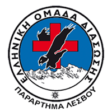Sunstroke and heat exhaustion are quite common during summer. Αlthough we look up for heat and sun during summer vacation, this can also be dangerous.
Definition
Sunstroke is the most common type of heat exhaustion and is caused by prolonged exposure to the sun, because of thermal radiation. It is caused due to body’s inability to regulate temperature, resulting in overheating and increased body temperature.
Normally human body has certain mechanisms that help deal with increased temperature of environment, thus avoiding increase of its internal temperature. These mechanisms include increase of the diameter of vessels, increase of breathing rate and intense sweating. All of the above mechanisms, help body cool itself, thus maintaining body’s temperature at about 36.6 °C.
In case of prolonged exposure in high temperatures and increased humidity, body can not adjust its internal temperature. Due o high humidity, sweat can not evaporate and thus body can no longer cool itself.
Symptoms
The effects of loss of thermoregulatory mechanisms are:
- Fever
- Dry skin
- Tachycardia
- Problems of sweating
- Cramps
- Quick Breathing
- Nausea, vomiting
In exceptional cases and if heatstroke not recognized and treated properly, heat exhaustion can become dangerous, causing damage to the nervous system and vital body’s functions. Extreme symptoms of severe heatstroke are confusion, spasms, nervousness, nausea, confusion of speech and perception, hallucinations, loss of consciousness and dizziness.
Hazard groups
There are some people who are more vulnerable to heatstroke, such as the elderly, children, people with cardiovascular problems, cystic fibrosis or diabetes.
Treatment
If there is any suspicion or any symptom that reminds you of heatsroke, then:
- Reach a cool and shady place. Ideally, choose a place with air conditioning.
- Hydrate yourself constantly, consuming plenty of water.
- Cool your body with cold shower.
- Lie down and slightly lift the head up.
